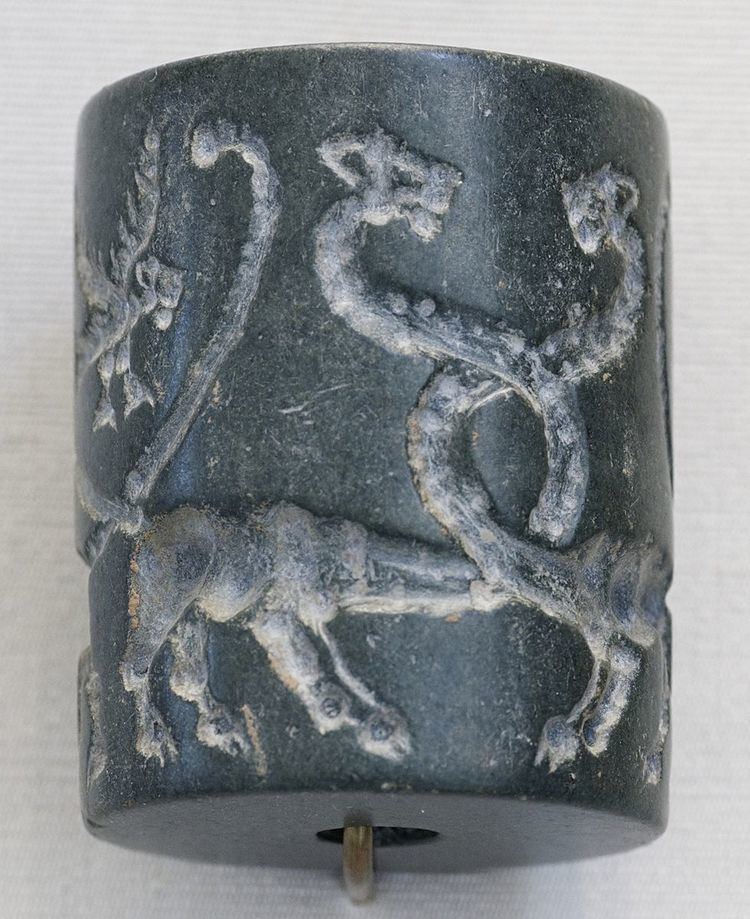Era 22nd century BCE ISO 639-3 None (mis) | Ethnicity Gutian people Glottolog guti1235 | |
 | ||
The Gutian language (/ˈɡuːtiən/; also Qutian) was spoken by the Gutian people, who briefly ruled over Sumer as the Gutian dynasty in the 22nd century BCE. The Gutians lived in the territory between the Zagros and the Tigris in present-day Iranian and Iraqi Kurdistan. Nothing is known about the language except its existence and a list of names of Gutian rulers in the Sumerian king list.
Gutian is included in a list of languages spoken in the region found in the Sag B tablet, an educational text from the Middle Babylonian period possibly originating from the city of Emar. This text also lists Akkadian, Amorite, Sutean, "Subarean" (Hurrian), and Elamite. There is also a mention of "an interpreter for the Gutean language" in a tablet from Adab.
The Gutian king names from the Sumerian list are Inkishush, Zarlagab, Shulme (or Yarlagash), Silulumesh (or Silulu), Inimabakesh (Duga), Igeshaush (or Ilu-An), Yarlagab, Ibate, Kurum, Apilkin, La-erabum, Irarum, Ibranum, Hablum, Puzur-Suen, Yarlaganda, Si-um and Tirigan.
In a posthumously-published article, W.B. Henning suggested that the different endings of the king names resembled case endings in the Tocharian languages, a branch of Indo-European known from texts found in the Tarim Basin (in the northwest of modern China) dating from the 6th to 8th centuries CE. Henning also compared the name Guti with Kuči, the native name of the Tocharian city of Kucha, and with the name of the Yuezhi, pastoral nomads described in Chinese records as living to the east of the Tarim in the 2nd century BCE, although the latter name is usually reconstructed with a *ŋʷ- initial in Old Chinese. He also compared Tukriš, the name of neighbours of the Guti, with the name twγry found in Old Turkish manuscripts from the early 9th century CE and thought to refer to the Tocharians. Gamkrelidze and Ivanov explored Henning's suggestion as possible support for their proposal of an Indo-European Urheimat in the Near East. However, most scholars reject the attempt to compare languages separated by more than two millennia.
